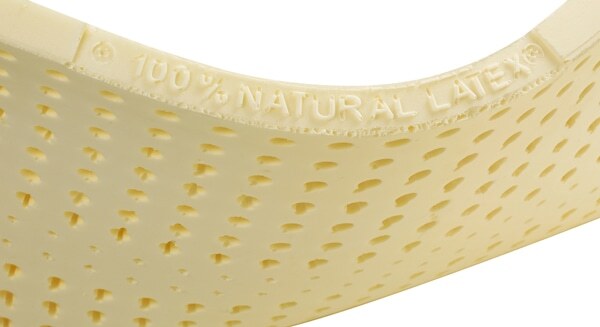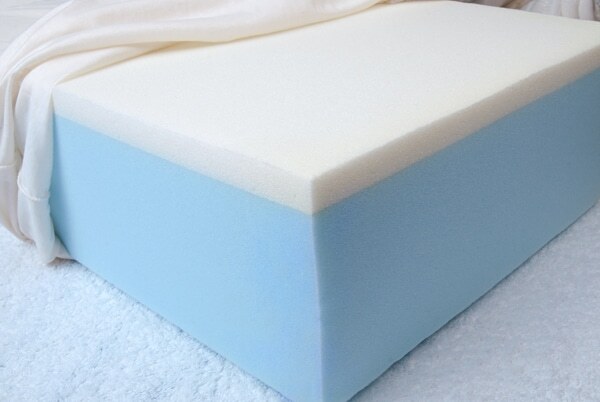How to choose a mattress firmness
Some considerations for choosing a firmness when shopping for a new mattress.
What is mattress firmness?
 If you don't have a preferred firmness comfort level, there are a few things to consider before choosing a mattress.
If you don't have a preferred firmness comfort level, there are a few things to consider before choosing a mattress.
When buying a mattress, there are literally thousands of choices. Having options is great, but when deciding on just one bed that will be comfortable and suit your needs, an endless selection can make it more difficult to narrow down your choices.
One of the most important considerations when deciding on a mattress is comfort. A lot of what we identify as “comfort” relates to how soft or firm a mattress feels, and beds can range from very soft to very firm. Think of soft and firm as two ends on a spectrum and every degree on this spectrum is referred to as the “firmness level” of a bed.
Measuring firmness
Brands use different forms of categorization to label their mattresses. Some of these labels are complicated and usually involve numbered ratings. For example, Saatva offers a scale for their firmness levels ranging from 1-10. This large range makes it difficult to decide where your firmness fit may be. Some brands such as Casper and Leesa sell a one-size-fits-all mattress which features a firmness that they claim is universally comfortable. The single firmness approach can be appealing to shoppers in a world of overwhelming choice, but the problem is that since people come in all shapes and sizes, it is impossible to make a single mattress that is actually comfortable for everyone. Mattress names, such as Loom & Leaf’s “Relaxed Firm” mattress, are nearly as confusing. Realistically, the different firmness levels can be summarized in three, straightforward descriptions: soft, medium, and firm.
It’s important to note that the firmness and support level of a bed are different. Firmness relates to the uppermost layers of a bed, while support is provided in the middle and lower layers. All well-made mattresses offer an underlying support system, regardless of what the top layers feel like. Even beds that feel very soft on top may still have an excellent support system below. A firm bed does not necessarily mean more support, as some doctors and chiropractors used to suggest. The softness or firmness of a mattress refers only to the initial feel of a bed.
Which firmness is right for you?
So how do you know which firmness is best for you? Some sources explain that finding your personal preference is as simple as asking yourself, “Do I prefer a soft or firm bed?” While it might seem like a simple question to answer, there are actually a variety of reasons behind our mattress firmness preferences. If you aren’t sure what firmness level you need, exploring these reasons will help you with your selection.
Spinal Alignment
Sleeping comfortably often depends on whether your spine is properly aligned. When standing or sitting, your spine is supported because you are subconsciously controlling your posture. When you lay down but are awake, your muscles are still engaged, so your alignment is maintained. However, when you fall asleep, your muscles relax, and your body relies on the sleeping surface to maintain alignment. If you’re sleeping on a surface that doesn’t naturally support your back, you may wake up with aches and pains as a result.
It's a common misconception that when we lay on our backs our spines are straight. Our spines actually have a slight, natural curve. So while you sleep, it’s crucial that your mattress supports this natural curvature, which also helps to relieve pressure points. The most important pressure points to consider when selecting a firmness level are those which have the most contact with your bed, such as your shoulders, hips, and legs. Choose a mattress firmness that offers adequate support without creating points of pressure, provides good body weight distribution, and is compatible with your sleeping position. For example, when sleeping on your side, your hips and shoulders should sink into the mattress enough to relieve pressure points and keep your spine in line.
Again, remember that “soft” does not necessarily mean “lacking support”. Choosing a firmness level simply means choosing the surface that will allow your spine to align properly on the mattress. Spinal alignment on the sleeping surface depends on various aspects including your body weight and typical sleeping position.
Sleeping Position
Your sleeping position is a crucial consideration when deciding on a fitting firmness level. The amount of pressure exerted on specific points on your body depends on which points are supporting most of your weight. For example, someone who sleeps on their stomach will exert more downward force on their hips than someone who sleeps on their back.
While sleep positions and firmness preferences come down to personal taste, there are recommendations for those who are undecided about what firmness to choose:
Side sleepers generally prefer a softer mattress. A soft surface allows the mattress to conform to pressure points in the shoulders and hips, as well as the arm that gets tucked beneath side sleepers, preventing numbness and tingling.
Stomach sleepers get more comfort out of a firmer mattress. Pressure in the hips and pelvis is much greater for stomach sleepers, because these are the points supporting most of their weight. A medium or firm mattress will prevent your hips and pelvis from sinking lower than your shoulders and creating an unnatural curve in the spine.
Back sleepers have the most range in firmness, as pressure is more evenly spread across their pressure points while they sleep. Because of this, back sleepers can find comfort on soft, medium, and firm mattresses. If you’re still undecided, a medium firmness mattress is a pretty safe choice.
Sleeping Partner
Depending on your body weight and sleeping positions, you and your partner may need different firmness levels. But it can be difficult to sacrifice your comfort. A medium firmness mattress can be a good compromise to satisfy both partners.
Body Weight
Weight is another key factor in choosing a firmness level, particularly for people who are over or under the recommended body mass index (BMI) range. The more you weigh per square inch of your body, the more force is exerted on your pressure points when you lay down. A heavier person may sink very low into a soft mattress, and a lighter person may feel as if they are resting on top of the surface of a firm mattress (and not sinking in at all). An additional consideration for heavier people (or those with mobility issues) is accessibility; sinking into a soft mattress makes it difficult to get in and out of the bed.
A general rule of thumb: the higher you are on the BMI scale, the firmer you will want your mattress. Conversely, the lower your BMI, the softer your mattress should be. The following guide can help you find your recommended firmness level:
- Below average BMI: Soft or medium
- Average BMI: Medium
- Above average BMI: Firm
Firmness levels in different types of mattresses
Now that you have a better idea of what kind of firmness levels there are, you can begin to look at which types of mattresses offer you options in that range. The firmness levels in different mattresses depend on the type, quality, and quantity of the materials used in the comfort layers, as well as the design or composition of the materials.
Traditional innerspring
 Firmness of innerspring mattresses is affected by the spring's shape and thickness.
Firmness of innerspring mattresses is affected by the spring's shape and thickness.
Innerspring mattresses are the most varied in terms of firmness levels. The firmness of these beds depends on the shape, gauge, and number of coils, as well as the type and amount of material packed in and around the coils. It’s important not to confuse the coil count of a mattress with its firmness level. Even a bed with a very high coil count can feel soft if the thickness (or gauge) of the coil is low. The shape of the coil also matters; hourglass-shaped coils are often firmer than continuous coils.
A popular form of the innerspring mattress is the pillow-top, which includes a separately sewn and upholstered comfort layer placed over the mattress. Pillow-tops provide a cushiony feel on top, even if the mattress surface below is firm.
Ideal For: Average weight, back sleepers, side sleepers
Latex
 Latex tends to skew to the firmer side.
Latex tends to skew to the firmer side.
Latex mattresses are made with foam rubber material, which gives it a distinct “bounce back” feel. Although these mattresses are offered in a range of firmness levels, they usually skew to the firmer side of the scale. This makes them ideal for stomach sleepers and those with a higher BMI.
One of the newest options in latex mattresses is the “zoned” latex mattress. Zoned mattresses are built in rows of varying firmness to provide targeted firmness on pressure points. This means that the mattress is able to provide soft cushioning where you need it and firmer support everywhere else.
Ideal For: Heavyweight, back sleepers, stomach sleepers
Memory Foam
 Foam and memory foam mattress firmnesses vary based on the foam's ILD rating and layer composition.
Foam and memory foam mattress firmnesses vary based on the foam's ILD rating and layer composition.
Memory foam is a polyurethane foam that has a unique visco-elastic response that reacts and softens with heat to mold itself to the form of any applied pressure. When the pressure is removed and the foam is allowed to cool, the foam returns to its original shape.
Memory foam firmness isn’t directly related to density. Instead, its firmness is affected by the foam's ILD rating and how the different layers are constructed. This variety of ILD ratings and versatility in layer composition means a wide range of firmness possibilities. A softer memory foam mattress will allow for more sink-in and contouring. A firmer memory foam mattress will still mold to body shapes, but will also provide more support. The foam allows your body to descend on different levels, resulting in even spine support. This uniform positioning also lessens the impact on pressure points, preventing aches, pains, and numbness.
Ideal for: Light – heavyweight, side sleepers, back sleepers, co-sleepers
Air Beds
Air beds contain open compartments that are filled with air to increase or decrease firmness. These beds aren’t the inflatable air mattresses typically used for camping or other short term use. Air beds offer more support than inflatable mattresses, are made with other materials, and are intended for long-term use. These mattresses often come with options for making adjustments on either side of the bed, which is a great option for couples with differing firmness preferences. Because you can regularly change the firmness level on these mattresses to reduce the downward force on specific pressure points, these beds are also often used for people with back injuries.
This type of mattress has many mechanical dependencies and may not be the most dependable choice as a result. Like many other air-filled products, air leakage can be a problem, resulting in an inconsistent level of comfort as air slowly leaks from the bed over time.
Ideal for: Co-sleepers, those with back injuries or chronic back pain
What if you choose the wrong firmness?
Discomfort while sleeping on a new bed can signal one of two things: either the firmness level of the bed isn’t right for you, or you have not gone through a full “break-in” period with your bed.
If you have slept on the bed for longer than the breaking-in period and you are still experiencing discomfort, there may be options to adjust the bed’s firmness level to better suit your needs. To assess whether your bed is too soft or too firm, you can observe cues from your body. Certain sensations and pains can tell you what the problem is, and what you need to do to improve your comfort.
How to tell if your mattress is too soft or too firm?
Making the final decision
Finding a comfortable mattress should be much easier once you’ve chosen a firmness level that suits your needs. When shopping in retail locations, keep in mind that a showroom shopping experience might not necessarily be a good indicator for which firmness level you require. That’s because floor model mattresses are often already broken in and will feel softer than a brand new mattress. New mattresses, particularly ones made with high density foam, can take up to 30 days to break in. On the other hand, shopping for a mattress with a good online retailer will provide you with a sleep trial, a break-in period, and any additional information you’ll need to find a mattress that you’ll love for years.
Summary or firmness levels
| Mattress firmness | Low weight sleepers | Average weight sleepers | Heavyweight sleepers | Side sleepers | Back sleepers | Stomach sleepers |
|---|---|---|---|---|---|---|
| Soft | ||||||
| Medium | ||||||
| Firm |


